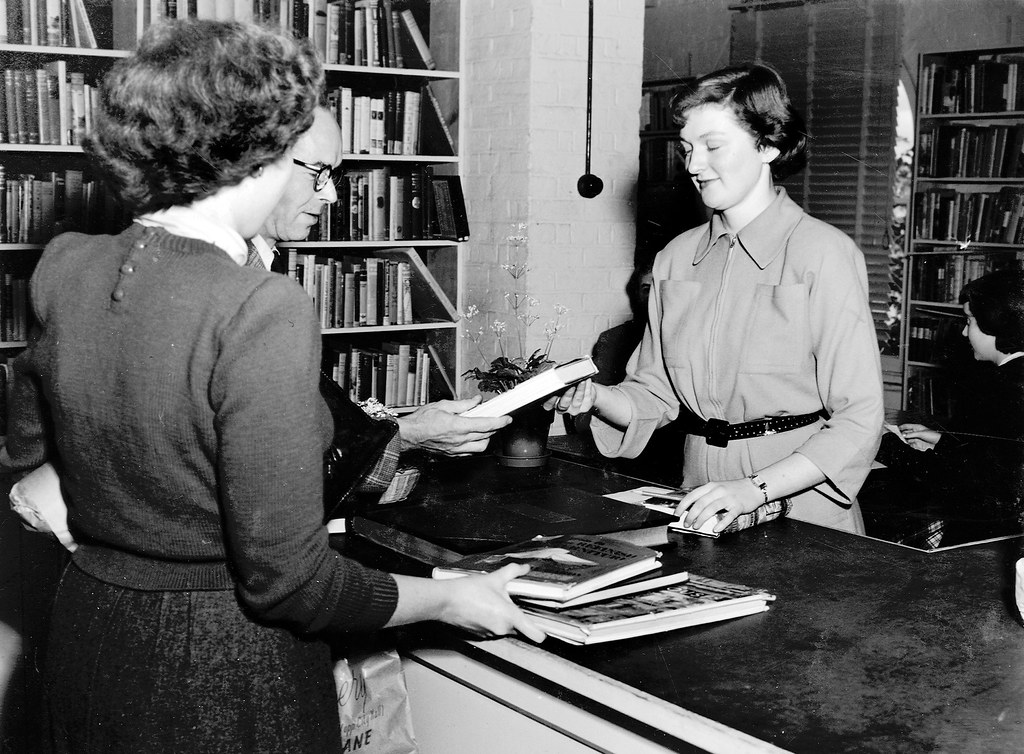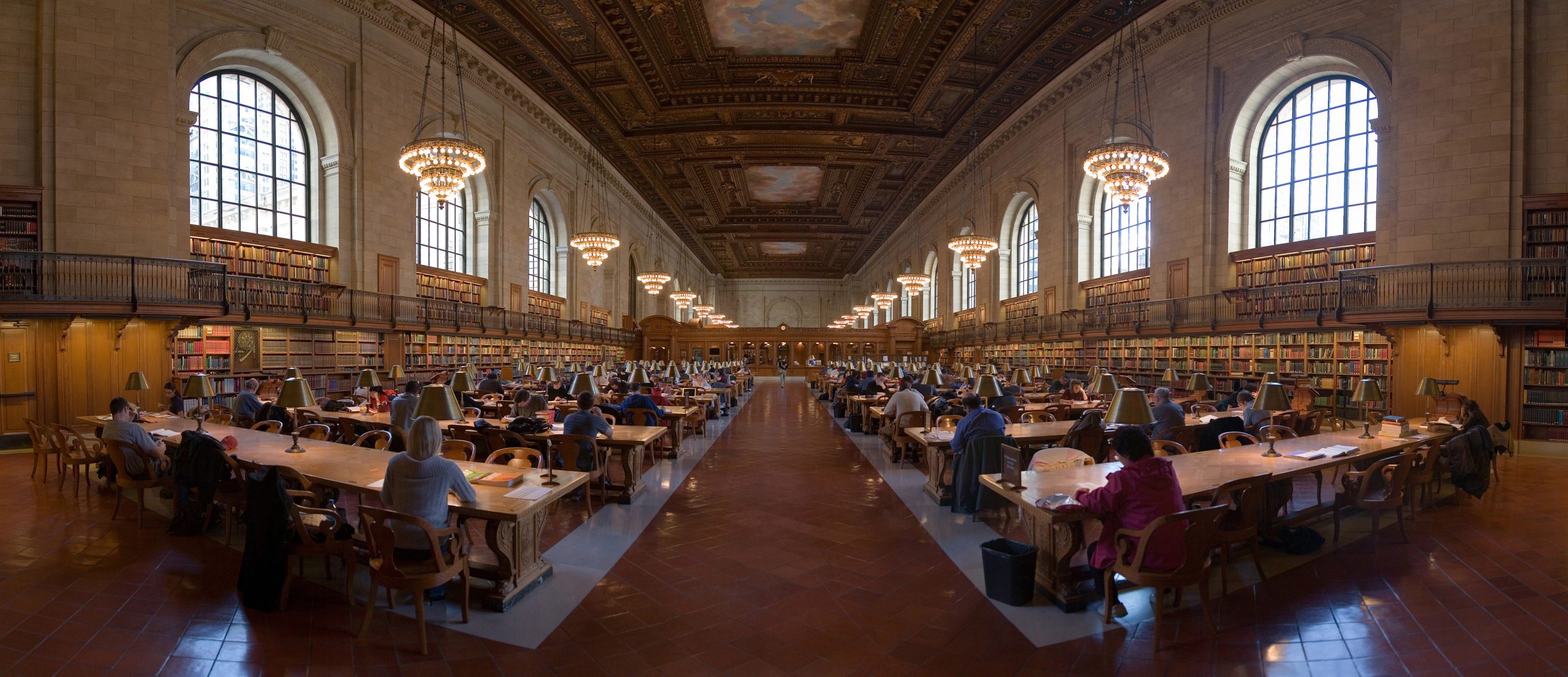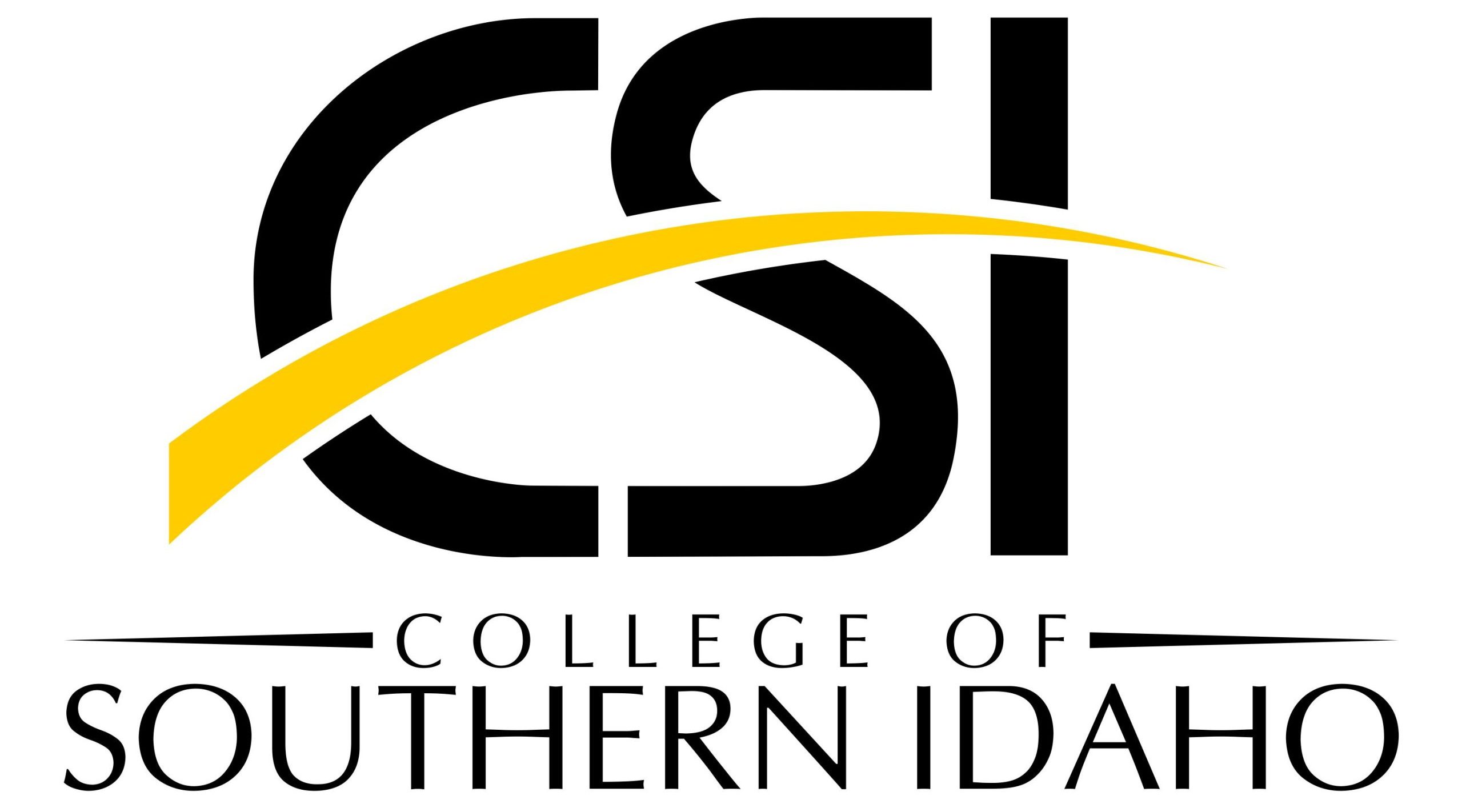3 Library Services
In order for any library to effectively serve its patrons, it has to research them first. It also has to research them continuously. One of the most important data sets you should research is population Demographics. This is the data regarding the ethnic, racial, economic, cultural, and other groups in your population. Interests and research topics could also be included in this type of data. When a library understands the demographics of its population, it will be more adequately prepared to give patrons the information resources they are most likely going to request. Keep in mind that one should not succumb to following stereotypes when developing collections for demographic populations. At the same time, however, knowing the demographics of your library’s relevant population can let you know which issues or interests relevant to those groups may need to be supported in your collections.
Each library will have a different population for which demographics should be taken. For example, the population of a public library is all residents of a specific geographic area. An academic library, on the other hand, needs to analyze the demographics of its institution’s student body and faculty. Combining and separating data points for these two groups will help the library prepare academic resources for courses and research projects. Other libraries have their unique populations and demographics. Medical libraries, for example, need to focus their collections on the most likely medical needs to be presented at their institution. Health demographics are important in determining the likelihood of certain issues.
Once demographics and other data have been obtained, they are incorporated into every service and department of the library. Some library departments are less patron-facing than others(cataloging, for example) but they are all centered around providing the most effective experience for all patrons. As libraries modernize and evolve, the digital capabilities, or lack thereof, of their patron population is an increasingly important demographic to obtain. This can inform programming and individual interactions with patrons.
Library Services
There are many types of services that libraries provide to their patrons. Not all libraries have all of these services, but all libraries should strive for at least one thing under each of these umbrellas. For example, a special library may not have programs inside its grounds, but it may create a display or a digital exhibit that can be seen by the public outside of its physical constraints.
Patron Services, also called public services, include any function of the library that facilitates patron-librarian interactions. These sometimes overlap with reference and circulation departments. In fact, sometimes Circulation is considered a subset of Patron Services. Other examples of Patron Services include programming, booklist creation, computer labs, informational videos, and other initiatives.

InterLibrary Loan (ILL) is a service where individual libraries agree to share their collections and to supply materials on demand to one another for patron use. ILL borrowing is comparable to a special order at a retail store. When the color, size, and brand of a jacket you want is out of stock, the store might offer to call another branch of the store to see if they have it and can send it to your local store.
ILL should never be used instead of developing a library’s own collection but is used instead as a supplement to their collection. If an item is repeatedly requested, it shows that there is a need for the item and it should be purchased. For more information on ILL guidelines and standards go to Interlibrary Loan Code for the United States, which is a source from the American Library Association detailing how InterLibrary Loan procedures should be carried out.
Reference departments have three primary purposes: to directly assist specific users in their pursuit of information, to educate and assist users in using resources effectively, and to instruct users on how to perform searches so they can become self-sufficient at finding resources. there are four types of questions reference librarians are asked: direction, ready reference, specific search, and research. Each of these requires unique skills and knowledge, and some are easier to answer than others. The chapter on Reference Librarianship will go over these types of questions in more detail. While some libraries have designated reference librarians, others do not. Whether or not you are a designated reference librarian, you should always be prepared and willing to answer any reference questions. Detailed questions, such as research questions, should probably be referred to the appropriate reference librarian if your library has one. No one wants their responsibilities to be supplanted by someone else.. However, initial help should be given in the meantime if possible.
Technical Services includes cataloging, collections development, acquisitions, and other aspects of the library that occur without much direct patron involvement.
The purpose of Cataloging involves two separate activities. First, a shelf address or location must be assigned to each book, CD, video, pamphlet, or other item. Second, specific information for each item must be entered into the library holdings database.
Within the activity of providing specific information about each item, there are two types of cataloging taking place:
- Descriptive cataloging describes the physical characteristics of the item, such as size and physical dimensions, number of pages, or length of running time.
- Subjective cataloging focuses on identifying the primary subjects and assigning the most appropriate subject headings. Subjective cataloging enables a searcher to locate specific items in which they are interested.
At one time, cataloging was accomplished one item at a time (original cataloging). This was very labor intensive and the work was duplicated by each library. With the advent of the Library of Congress’ catalog card distribution system and then cooperative catalogs and worldwide bibliographic utilities, copy cataloging became the routine avenue for most items. Today, a cataloger is able to search large, reliable databases, such as OCLC, and download the information into their own records. This saves many hours of work for each item. Original cataloging must still be performed on unique items.
Over the last 25 years, cataloging processes have changed dramatically. Most libraries perform original cataloging on less than 10% of their acquisitions, and many small libraries are able to find acceptable cataloging for all except 1-2% of their new items.
Acquisitions can be considered the “business” part of Technical Services. This department’s purpose is to obtain selected items and provide payment. They work in coordination with book vendors, publishers, and license providers to secure access for library staff and patrons. Acquisitions often works in tandem with the Collections Development Department.
Preservation is a technical facet of librarianship usually reserved for special libraries, like archives or government repositories. However, it can, and is, also performed at public, school, and academic libraries for items that are worn down, especially if these items are high in circulation. Preservation can occur through taking steps to preserve the physical item, transferring the information-containing parts from their original binding to a new binding or physical format, and digital preservation.
Digital Divide and the Modern Library
Digital preservation is just one of the facets of the ever-increasing modernization and digitization of library services. This change was inevitable as digital items proliferated in many formats, from mp3s to text files to pdfs to websites. Digital literacy is becoming increasingly synonymous with information literacy. the plain truth is that technology, and thus digital files and navigation, have become an intrinsic part of our daily life. We check the weather, load our health data, listen to music, and learn about popular and political news stories. Social media is also a major part of many peoples’ lifestyles. As information repositories, libraries have incorporated these changes into collections and programs. It is our job to help people become more comfortable with the digital reality of the present and the digital promises of the future. There are two main types of people when we speak of digital information literacy. The first are digital natives, and the second are digital immigrants. The aspect of their lives that separates them is referred to as the digital divide.

Digital Natives are those individuals who have grown up with technology. Their whole lives, or most of it, have been spent in the Digital or Information Age. The first people to truly do this were the Millennials, who were born between the early 1980s and the late 1990s. These were people who grew up as cell phones, digital portable music players, and other technological advancements were being invented, tested, released, and widely used. As they aged, they had even more inventions to explore. They learned how to navigate and take advantage of technology at the same time they were learning their first language and other life skills. Thus, technology is literally part of their nature. The same is true of all people who have been exposed to technology who were born after Millennials. These groups are colloquially called Generation Z and Generation Alpha. They did not grow up as initial technologies were developed, but they were born in a time when these inventions had already become a ubiquitous part of their environment. They also grew up alongside other inventions that grew from the first. All children who are raised in the present and the future will be digital natives.
Digital Immigrants are those who were born before the 1980s. They did not grow up with technology. Instead, they were inhabitants of a world whose chief sources of information were print text materials such as books and newspapers. Audiovisual material was provided at the theater or on television. Audio material was only found via cassette tapes or compact discs. The development of technology came later in their lives, as they were teenagers or even middle- or old-aged. Navigating these developments did not come as intuitively to most of these people as it did to their children, students, and other young friends.
The Digital Divide is the fact that digital natives have confidence and abilities related to digital technologies and resources while digital immigrants do not have these assets. This poses a problem, as two major groups are jockeying for different types of resources. Some digital immigrants will decry the use of technology and insist that all library resources be analog. Some digital natives will have never picked up a physical book in their life. Instead, they will completely rely on digital replacements for physical information resources. The result is that digital immigrants will not know how to navigate library digital resources and digital natives will have the same problem with physical resources. Both of these groups need to learn how to work together, develop their information and technology literacy skills, and acknowledge the advantages of each other’s primary information media. Programming is a major way to help both of these communities. In fact, you could have a series of programs in which digital immigrants help digital natives find physical materials, and digital natives reciprocate with online materials.
Types of Libraries
Libraries can be divided into four broad types:
- public
- school
- academic
- special
The missions and goals of these four types are very different.
Academic Library
Academic libraries serve public and private post-secondary institutions of higher education (colleges and universities). These libraries support the mission of their college or university. They provide books, and other materials to meet the instruction and research needs of the faculty and students. They don’t usually collect a lot of leisure reading materials (popular fiction) but do have extensive reference materials to help with in-depth research.
An important development with academic libraries is the change in focus and criterion for measurement of success. Before 1990, libraries were a storehouse for books and it was the volume count upon which they were measured. This focus changed to providing access to information in all its varied forms. Access to, rather than ownership of information resources is now how libraries are measured. This developmental shift has impacted library services and the roles of staff.
School Library
School libraries (also known as School Library Media Centers) focus on the age and grade levels at that school, and they serve the students and faculties there. They usually have a lot of age-appropriate leisure reading materials (picture books for elementary school kids, or Harry Potter-type books for middle school and high school, etc.).
The mission of the school library media center is to support the curriculum of the institution to which they belong and to promote information literacy. Teaching students the process by which to find needed information enables them to become lifelong learners and to function effectively as citizens in the economic and political arenas.
The history of school libraries only reaches back about fifty to seventy years. It wasn’t until the 1950s that most secondary schools had libraries, and it wasn’t until the 1970s that elementary schools were provided with libraries.
Public Library
Public libraries serve a very wide range of patrons and their information needs. Mission statements for public libraries show that they provide all things to all people: leisure reading for everyone from toddlers to senior citizens, and information needs for first-graders to scholars. the typical public library comes under the jurisdiction of a municipal governmental agency (city or county). But the specific mission of each individual public library must take into consideration the particular needs of their community. Different hours may be required, different collections of materials may be necessary to fulfill the information needs, and different services may be crucial in providing what is demanded by patrons.
A public library may be a single facility or many branches throughout their service area. Public libraries in rural areas may be in the form of a bookmobile that makes regular rounds to a dispersed population.
As the information needs of communities change, so must the objectives of a public library to keep pace. Throughout the nineteenth century, adult education was seen as the primary objective. But as the twentieth century came, recreational reading and reference were added to the list of objectives. By the 1960s, when a wave of social consciousness took hold, public libraries increased their efforts to help poor and uneducated people fit into the more highly scientific and technical society. With the advent of the Internet, the way that Americans view information has changed. This phenomenon has caused all types of librarians to question, “Is a library a place or a function?”
An additional function of the public library is to provide Internet access – often the only place for some patrons to access information that is only available online. The digital divide is another example of the information “have” and “have nots.” It is an objective of the public library to help those on the wrong side of the digital divide to bridge the gap.
Special Library
Special libraries include corporate, medical, law, religious, governmental, prison, not-for-profit organization libraries, and other highly specialized collections. Often businesses or agencies will have their own libraries with very specialized collections to support the information needs of those who work there. For example, many law firms have their own legal library, and the State Department of Wildlife and Fisheries has a library with materials about wildlife, hunting and fishing, maps, conservation, etc. Each library will tailor their collections (what they own or have) to meet the specific needs of their patrons, or customers. The term “special library” is often used as a catch-all term to describe any library that is not a public, academic, or school library. The primary characteristic that is common to these libraries is that their collections include materials relating to specialized subject areas. The mission of the special library is to directly support and further the objectives of its parent organization. A special library focuses on seeking out and providing information that the parent organization’s clients or patrons need rather than acquiring and preserving the information in a collection.
Other terms by which special libraries are known are knowledge management centers and information centers. Librarians of special libraries must market their services as being at the cutting edge. The importance of the special library to its parent organization strongly affects the financing, governance, resources, and services available to the library. The more highly regarded, the easier it is to obtain financing to increase the resources and services provided.
A prominent variety of the special library is the research library. This type has traditionally been associated with academic libraries but is also found outside the realm of academia. Most of these libraries’ origins began with endowments by wealthy benefactors. Some of these libraries are part of other libraries. For example, the New York Public Library has research section that behaves much like a special library.

Another segment of special libraries is federal government libraries. These include national health, agriculture, technical, federal reservations, federal prisons, military bases, and many others. The three national libraries, which are the Library of Congress (LC), the National Library of Medicine (NLM), and the National Agriculture Library (NAL), also fall under this category. These three libraries represent one-third of the total federal collections, one-half of all federal library expenditures, and two-fifths of all the personnel in federal libraries. The Library of Congress alone has a staff of almost five thousand employees.
Corporate libraries are another kind of special library. The companies to which these libraries belong are very dependent on the fast retrieval of information. These libraries may belong to law firms, marketing firms, insurance companies, finance institutions, and high-tech firms. Take a minute to think of the various information needs of these companies.
Physical, ethnic, racial, religious, economic, and other factors that describe a group of people in a given geographic area or who have another common denominator. All of these factors and more should be considered when making decisions about library policy, collections development, deacquisitioning, and other functions of the library.
All services that face people who come into the library for any purpose. All individuals are patrons, regardless of whether or not they check out an item. Patron services include circulation, programming, and outreach functions.
The segment of a library's processes that is involved with checking out and checking in items as well as public relations matters, including patron interactions, related with these processes. They also collect data from these processes and use it to make recommendations to library administration regarding holdings, acquisition, and weeding.
A service provided by the combination of WorldCat and Connexion. If an item is not available at one library, they can request that a copy of the same manifestation be sent from another library. Preferably, requests are made to the nearest geographic library. However, requests can be made from far away if necessary. Both physical items and surrogate digitizations of items can be exchanged through InterLibrary Loan. Other consortia provide interlibrary loan options, but their reach is not as broad. Public school library systems and country and regional public library networks often have a specialized form of interlibrary loan.
The action of retrieving and/or providing access to information for a patron. This is sometimes stereotypically considered the only function of a librarian. Although we are good at it, it is only part of what we do. Still, retrieval of relevant information is a vital part of a librarian's responsibilities. Reference is the first part of a Reference Interview, the end goal of which is to enable a patron to retrieve relevant information for themselves in the future.
The behind-the-scenes processes that are involved in keeping a library operational. The largest aspect of technical services is cataloging, but acquisitions and collections development are also major functions under the umbrella of Technical Services.
The process whereby items are put into specific categories according to predetermined schemata. Librarians participate in two main types of cataloging: original cataloging and copy cataloging. The ratio of original to copy cataloging is affected by the type of library in which one works and the types of items submitted for acquisition.
The process of accepting an item submitted for intake to the library. This process is performed selectively. Its purpose is to select only those materials that serve the needs of the primary service population or demographic. Items that do not perform this function will not be acquisitioned. They will be recommended to another library or returned to the potential donor or vendor.
The act of taking deliberate steps to preserve an item. In the context of librarianship, preservation of an object is done to preserve, recover, restore, or perpetuate the information or data contained in the object. Preservation is not done for the sake of the item itself. If an item is fragile, or if the library has means, digital preservation should always be considered in one form or another. Even non-fragile items can be preserved if time, space, and other factors permit.
Individuals born just before, during, or after the Digital Age began. These individuals have grown up with digital technology and have an almost innate sense of how to manipulate and use it.
People who lived before the Digital Age or who have not lived in a society that has not had contact with modern digital technology.
The gap in knowledge and ability between Digital Immigrants and Digital Natives.
A library that serves the changing educational needs of its parent institution. These libraries also serve similar functions as school libraries to students of the institution, but their offerings for these clients are also generally more academically inclined.
A library whose primary purpose is to help students learn about topics. Depending on the emphases of the school, the range of these topics may be broad or narrow.
A library that serves all residents and/or citizens of a particular area at every stage of their life. The only requirement is that one must live in a particular area. Sometimes, even this requirement is waived.
A library that only or mostly provides materials dealing with a specialized subject or range of subjects. In modern times, a special library may hold materials in a wide range of subjects but may be specialized in its holdings format or method of service. A special library exists purely to facilitate research or activities of a clientele that is homogenous in one way or another.


Feedback/Errata
2 Responses to Library Services